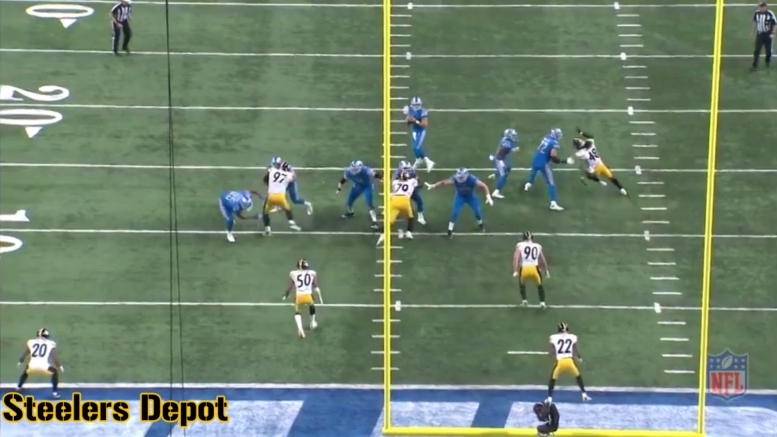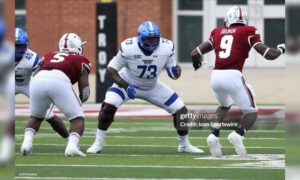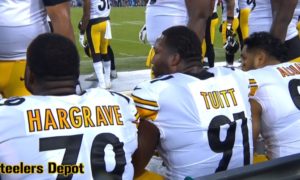I don’t know about you, but for me it was hard to miss who was out there are the end of the game last Sunday. I’m talking about the pass-rushers. On the Pittsburgh Steelers’ final drive against the Detroit Lions, and especially at the end, if was three players rushing: Cameron Heyward, Bud Dupree, and Javon Hargrave.
As the Lions drew closer and closer to the goal line, it seemed these are the three players the Steelers wanted getting after the passer. As we now know, it was Hargrave who was able to pressure Matthew Stafford on fourth and seven from the eight that nearly resulted in him throwing an interception.
That’s not to say that this is what they did on every snap. On the first play of the final sequence in the red zone, it was T.J. Watt who rushed and Dupree who dropped. But Watt spent nearly half the game dropping into coverage, as I highlighted earlier.
There was also the occasional blitz thrown in from Ryan Shazier or Vince Williams. In, in fact, earlier in the drive, L.T. Walton was in there for Heyward. That wasn’t working out too well, and after a big play, the Steelers called a timeout in part to get Heyward back in, though in actuality it was an injury timeout.
The whole scene just somehow struck me as ‘the plan’. Against this type of offense, in this game situation, it made sense to be dropping eight into coverage. And Watt’s skills in coverage made him the sensible one to drop.
With Stephon Tuitt out, the obvious answer for another rusher was Hargrave. Tyson Alualu and Walton are not the ones to get the job done in that type of situation. Of course, if Tuitt were in there, then it might even make sense to use more four-man rushes, given how well he creates penetration.
I don’t think this is necessarily part of some coherent game plan. I just thought it was interesting, and perhaps telling, that these were the players that they opted to turn to—or four players including Watt’s role in coverage and as a decoy rusher—when the game was on the line and they needed to close the deal.
It’s also nice that Heyward is the only ‘old’ player of the group at 28. Even Tuitt is actually still just 24 years old, as is Dupree (who is a couple of months other than Tuitt), while Watt just turned 23 less than a month ago. This is a core that will grow together in their prime. And let’s not forget the 24-year-old Hargrave as well.
This isn’t meant to be the most insightful article or analysis in the world, honestly. I just wanted to share this late-game observation that I’ve been mulling over for nearly a week now, and what it means to have this core group in place.








